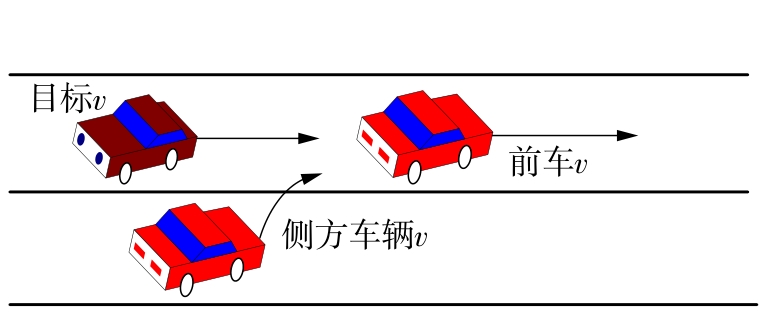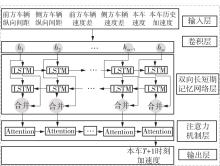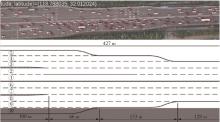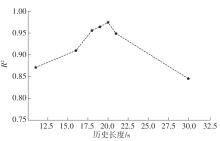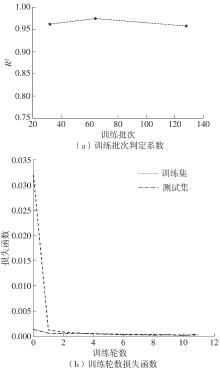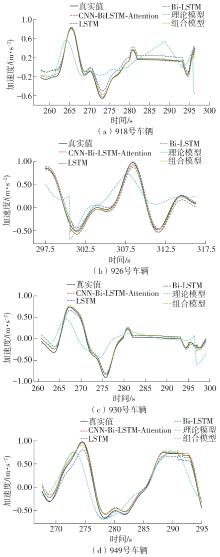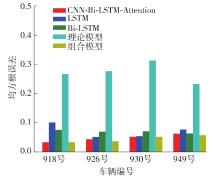| 1 |
BANDO M, HASEBE K, NAKAYAMA A,et al .Dynamical model of traffic congestion and numerical simulation [J].Physical Review.E.Statistical Physics,Plasmas,Fluids,and Related Interdisciplinary Topics,1995,51(2):1035-1042.
|
| 2 |
HELBING D, TILCH B .Generlized force model of taffic dynamics [D].Physical Review E,1998,58(1):133-138
|
| 3 |
JIANG R, WU Q, ZHU Z .Full velocity difference model for a car-following theory[J].Physical Review E,2001,64(1):017101/1-4.
|
| 4 |
王涛,高自友,赵小梅 .多速度差模型及稳定性分析[J].物理学报,2006,55(2):634-640.
|
|
WANG Tao, GAO Ziyou, ZHAO Xiaomei .Multiple velocity difference model and its stability analysis[J].Acta Physica Sinica,2006,55(2):634-640.
|
| 5 |
孙棣华,李永福,田川 .基于多前车位置及速度差信息的车辆跟驰模型[J].系统工程理论与实践,2010,30(7):1326-1332.
|
|
SUN Dihua, LI Yongfu, TIAN Chuan .Car-following model based on the information of multiple ahead & velocity difference [J].Systems Engineering-Theory & Practice,2010,30(7):1326-1332.
|
| 6 |
KESTING A, TREIBER M, HELBING D .General lane-changing model mobil for car-following models[J].Transportation Research Record:Journal of the Transportation Research Board,1999(1):86-94.
|
| 7 |
TANG T Q, HUANG H J, GAO Z Y .Stability of the car-following model on two lanes[J].Physical Review E Statistical Nonlinear & Soft Matter Physics,2005,72(6):066124 /1-7.
|
| 8 |
陈漩,高自友,赵小梅,等 .反馈控制双车道跟驰模型研究[J].物理学报,2007,56(4):2024-2029.
|
|
CHEN Xuan, GAO Ziyou, ZHAO Xiaomei,et al .Study on the two-lane feedback controled car-following model [J].Acta Physica Sinica,2007,56(4):2024-2029.
|
| 9 |
王玄金 .考虑前车换道过程的跟驰模型研究[D].重庆:重庆大学,2017.
|
| 10 |
刘大为,史忠科 .基于侧向车辆影响的跟驰模型建模及仿真[J].交通信息与安全,2019,37(1):35-41.
|
|
LIU Dawei, SHI Zhongke .Modeling and simulation of car-following model based on influences of lateral vehicles [J].Journal of Transport Information and Safety,2019,37(1):35-41.
|
| 11 |
陶鹏飞 .考虑侧向车影响的跟驰行为分析与建模[D].长春:吉林大学,2009.
|
| 12 |
周立军,王殿海,李卫青 .人工神经网络及粒子群优化算法在跟驰模型中的应用[J].吉林大学学报(工学版),2009,39(4):896-899.
|
|
ZHOU Lijun, WANG Dianhai, LI Weiqing .Application of artificial neural network and particle swarm optimization algorithm in car-following model[J].Journal of Jilin University (Engineering and Technology Edition),2009,39(4):896-899.
|
| 13 |
XIAO W, JIANG R, LI L,et al .Capturing car-following behaviors by deep learning[J].IEEE Transactions on Intelligent Transportation Systems,2017,19(3):910-920.
|
| 14 |
HUANG X, SUN J, SUN J .A car-following model considering asymmetric driving behavior based on long short-term memory neural networks [J].Transportation Research Part C:Emerging Technologies,2018,95:346-362.
|
| 15 |
王梦玉 .基于LTE-V车车通信环境下的跟驰模型设计[D].北京:北京交通大学,2020.
|
| 16 |
YANG X L, WANG P, ZHOU Y,et al .Platoon trajectories generation:a unidirectional interconnected LSTM-based car-following model [J].IEEE Transactions on Intelligent Transportation Systems,2020,23(3):2071-2081.
|
| 17 |
孙倩,郭忠印 .基于长短期记忆神经网络方法的车辆跟驰模型[J].吉林大学学报(工学版),2020,50(4):1380-1386.
|
|
SUN Qian, GUO Zhongyin .Vehicle following model based on long and short-term memory neural network [J].Journal of Jilin University(Engineering and Technology Edition),2020,50(4):1380-1386.
|
| 18 |
BAHDANAU D, CHO K, BENGIO Y .Neural machine translation by jointly learning to align and translate [C]∥ Proceedings of International Conference on Learning Representations 2015.San Diego:[s.n.] 2014:1-15.
|
| 19 |
ROSE S, MARK J .Simple optimal weighting of cases and controls in case-control studies [J/OL].International Journal of Bio-statistics.2008,4(1):1-24.
|
| 20 |
王雪松,孙平,张晓春,等 .基于自然驾驶数据的高速公路跟驰模型参数标定[J].中国公路学报,2020,33(5):132-142.
|
|
WANG Xuesong, SUN Ping, ZHANG Xiaochun,et al .Calibrating car-following models on freeway based on naturalistic driving data [J].China Journal of Highway and Transport,2020,33(5):132-142.
|

